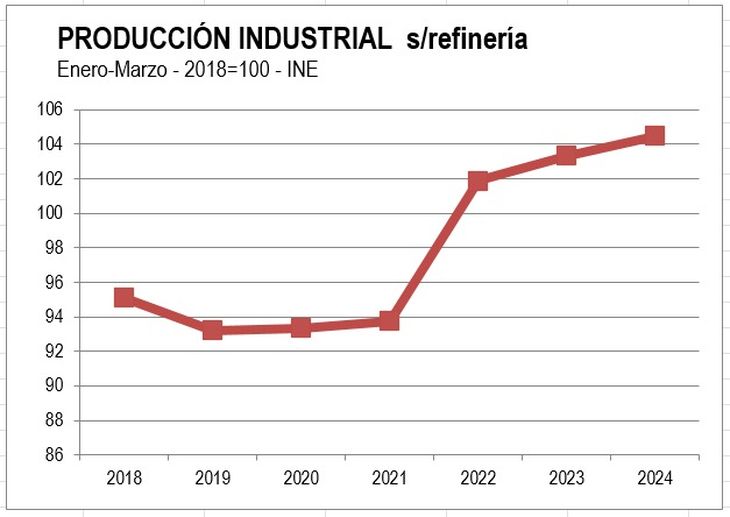The decrease in March reached 17%, driven by the calendar effect and the maintenance stoppage of the La Teja refinery.
When the discussion about competitiveness and industrial jobs are at a critical point due to the situation in National Beer Factories(FNC) and other cases, the National Institute of Statistics (INE) With the data published today, it seems to agree with the claims of the industry and its workers.
The content you want to access is exclusive to subscribers.
In fact, the Industrial production In March it had a year-on-year drop of almost 17%. Monthly data usually have some specific factors that can alter the background trend of the variables; Therefore, it is convenient to analyze the accumulated data. Thus, in the first quarter, industrial production fell 5.5% compared to the same period last year. It is possible that the data carries additional deterioration because the Tourism Week this year it fell in March (last year it was in April). But at an industrial level this is not usually a significant effect, from which it follows that the industry is, in effect, in decline.


The aforementioned 5.5% drop includes the data of the refinery, that was stopped during these last months. Leaving aside that industry – one of the most important in the Uruguay-, Industrial production grew 1.1% in the first quarter compared to last year.
But an exceptional fact is also incorporated here: the strong push of the new pulp mill in UPM in Paso de los Toros. Specifically, the sector of cellulose contributes 4.4 percentage points of quarterly growth; So – if this item is left aside – the rest of the industry (without pulp or refinery) recorded a fall of 3.3% in the interannual quarter, very significant.
The picture looks more complicated if we take into account that the activity of the concentrate plant is also included there. Pepsi in ZF Cologne, which had an increase of 7% in the quarter. If this item were also excluded, the drop in what can be considered the general industry – which works mostly in non-free territory – was even greater.
WhatsApp Image 2024-05-14 at 15.54.35.jpeg

The problem of competitiveness and relative prices
For several months now, industrialists have been raising problems of competitiveness and relative prices, due to the sharp fall in real exchange rate in it Uruguay. Own central bank believes that what is commonly called “exchange delay” It is around 13%.
In economic terms, in its essence, the exchange rate delay is the increase in the cost of local labor in its international comparison. If he salary becomes more expensive in relative terms to the rest of the trading partners and the productivity does not compensate for that higher price, you begin to lose activity and employment.
In the industry, Employment fell 1% year-on-year in March, a fairly modest decline. But it should be noted that many industries that stop their activity temporarily maintain their workforce, waiting for new demand. When we look at the number of hours worked, the year-on-year drop was 9% in March. The industry turns on a yellow light and this is seen in public statements and in data from the INE.
Source: Ambito




